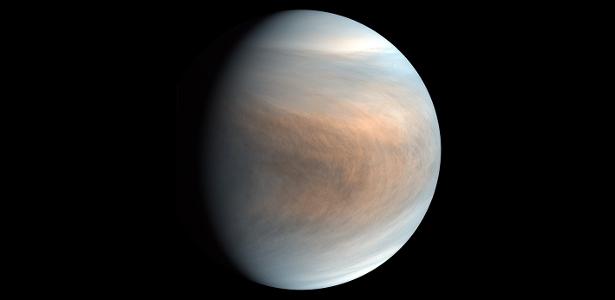Five mysteries that can be solved with missions to the planet Venus
Because of its hostile environment, Venus is still a planet full of unexplored secrets. Despite the proximity of Earth, the greatest investments and looks are still directed to Mars. Venus is a hot, toxic, volcano-covered planet.
At the end of last year, Scientists have found evidence of microbial activity in the Venusian atmosphere. The research was published in the renowned journal Nature. The presence of phosphine on the planet can indicate the result of biological processes and, consequently, living beings.
In early June, the NASA announced two missions, called Davinci + and Veritas, for exploration of the planet, which should take place between 2028 and 2030. Europe has also approved its own exploration mission, EnVision. About 40 missions have already tried to visit the planet, but its hostile environment, with extremely high temperatures and strong pressure, was a challenge for the instruments and astronauts.
The three new expeditions should provide answers to at least five questions surrounding Venus, according to Nature magazine.
Why are Venus and Earth so different?
The two planets are about the same size and about the same distance from the Sun. Venus and Earth are called “sister planets”, but only ours is habitable. One of the questions scientists want to answer concerns the inhospitable environment of Venus. Temperatures on the planet can reach 470°C, enough to melt lead.
Veritas and EnVision intend to seek answers through the geological exploration of the planet, that is, the surface. Both will seek to map the relief of Venus.
Davinci+ will measure non-reactive noble gases, such as helium and xenon, and other elements of the atmosphere. It will have an orbiter to photograph the planet using ultraviolet and infrared light.
Did Venus ever have oceans?
About 40 years ago, NASA’s Pioneer Venus Project pointed out that the planet had a shallow ocean. More recently, the Goddard Institute for Space Science (Giss) created a series of simulations to see if Venus had a stable climate, capable of allowing liquid water, and found that Venus could maintain a stable temperature, between 20°C and 50°C for billions of years.
With the measurement of the atmosphere made by Davinci+, this mystery can be solved. Your probe will take highly accurate measurements to reveal the gases present.
Did Venus ever have continents?
An article published in November 2020 in Nature indicated that 7% of the surface of Venus is covered by mountainous regions called tesserae, which are still a great enigma for scientists. One of the hypotheses is that they are structures similar to continents.
Veritas’ aim is to study the composition of tesserae and compare the amount of basalt volcanic rock in regions of different altitudes. “On Earth, when continents form, the large amounts of basalt in the oceanic crust melt in the presence of water,” Suzanne Smrekar, Veritas mission leader, tells Nature. “If we can test this hypothesis, we can show that these huge plateaus are effectively fingerprints of a time when there was water,” being the tessela continental landmasses that were once surrounded by water.
The Davinci+ spacecraft may also help to understand more about tesserae as it descends over the Alpha Regio, a sprawling Venusian plateau. The expectation is to obtain up to 500 more images of the surface in the few minutes it can survive under high temperatures and pressures.
Does Venus still have active volcanoes?
The surface mapping done by Veritas and EnVision aims to explore the planet’s volcanic regions and bring high resolution images. The two devices will look for evidence of elements related to volcanoes, such as lava. To this day, it’s not known whether Venus’ volcanoes were ever active thousands of years ago—or if they still are today.
The Japanese probe Akatsuki, launched in 2010, pointed to changes in the amount of ultraviolet light absorbed by Venus’ atmosphere, which could be an indicator of recent volcanic activity.
Do you have phosphine on Venus?
The study that revealed phosphine in Venus’ atmosphere could have stronger evidence through the Davinci+ mission. There is a lot of debate around the results of the research published in Nature, so the new mission will try to measure more accurately the presence of the element on the planet.
–

:quality(80)/cdn-kiosk-api.telegraaf.nl/4f5d160c-d21c-11eb-8b24-0217670beecd.jpg)
